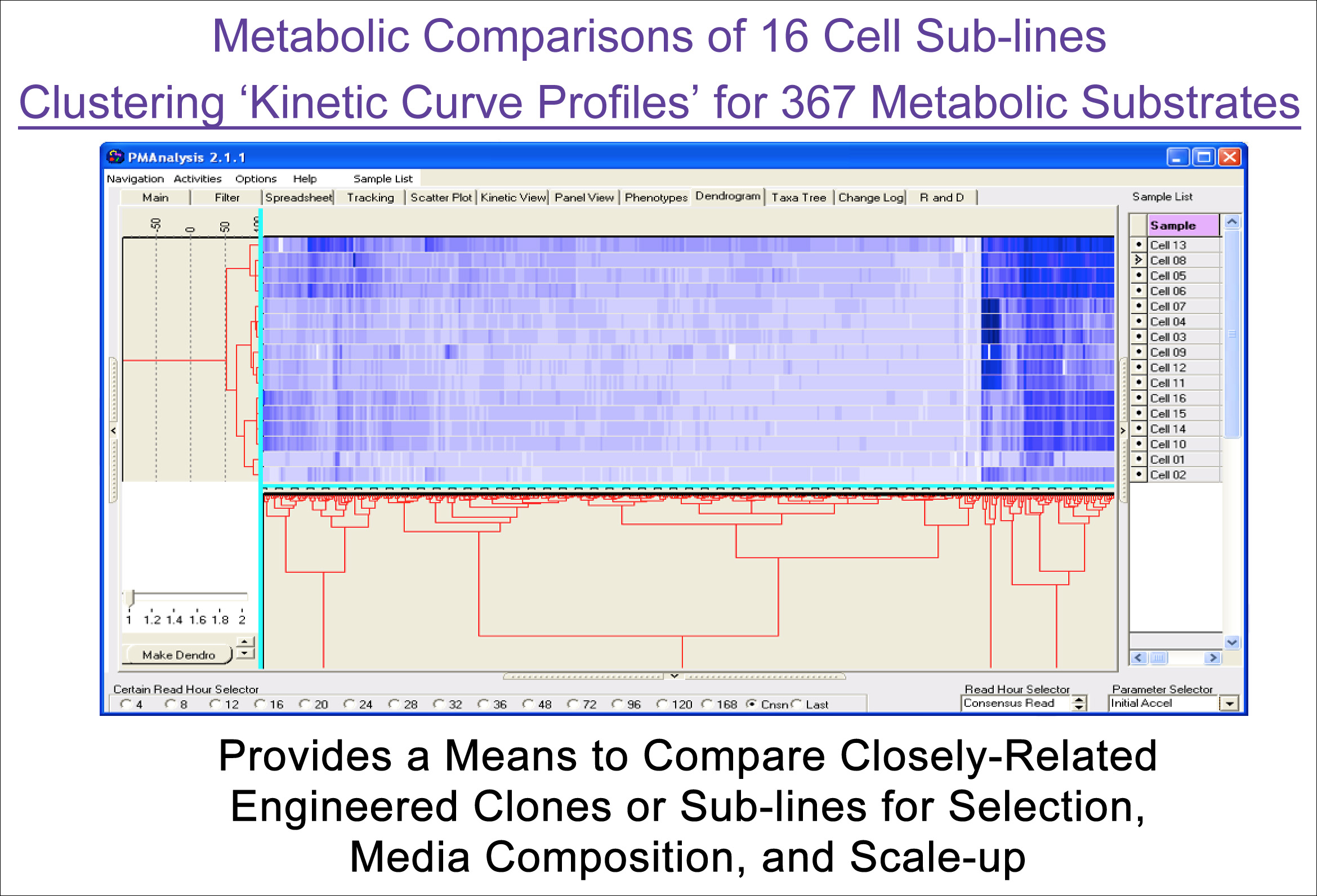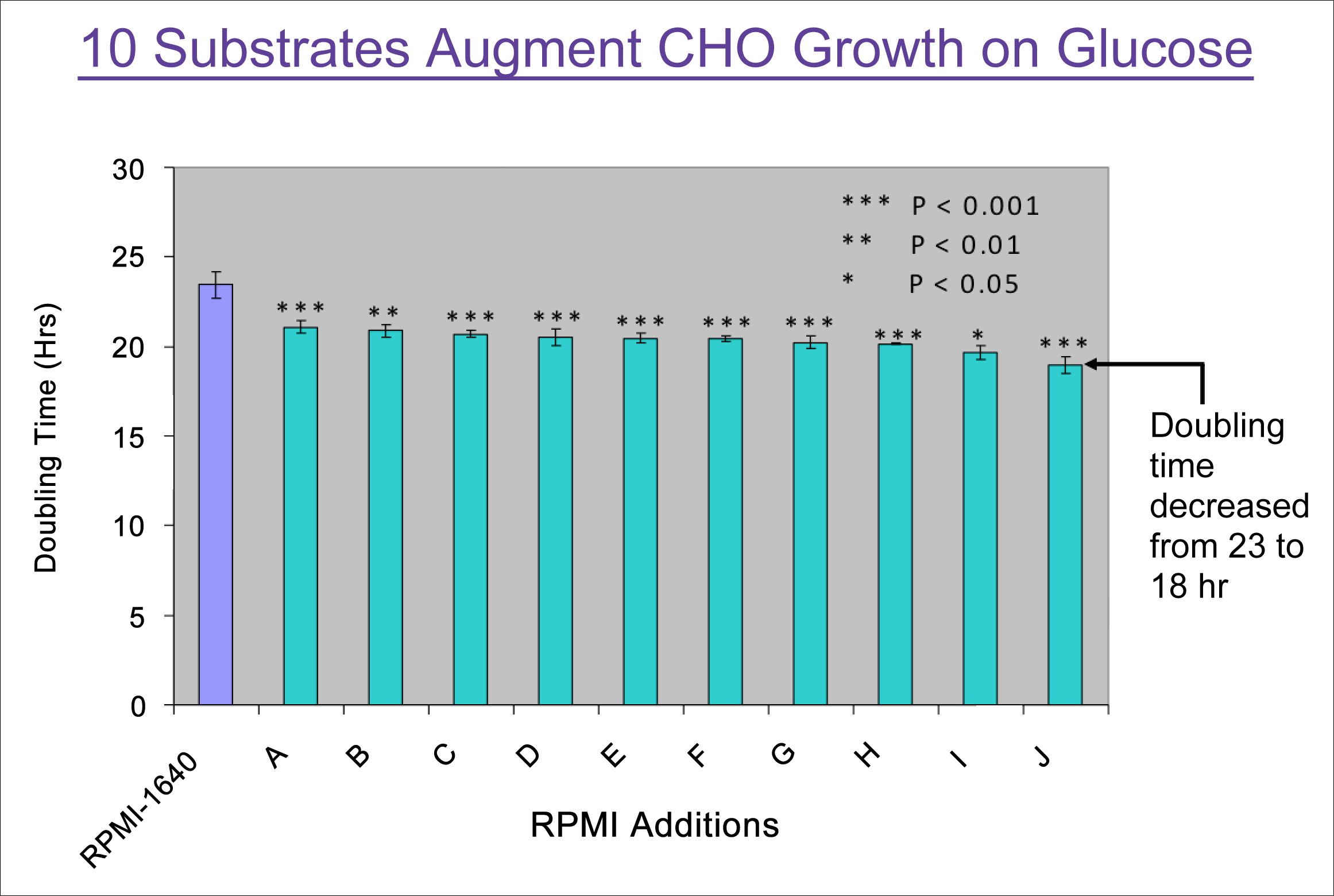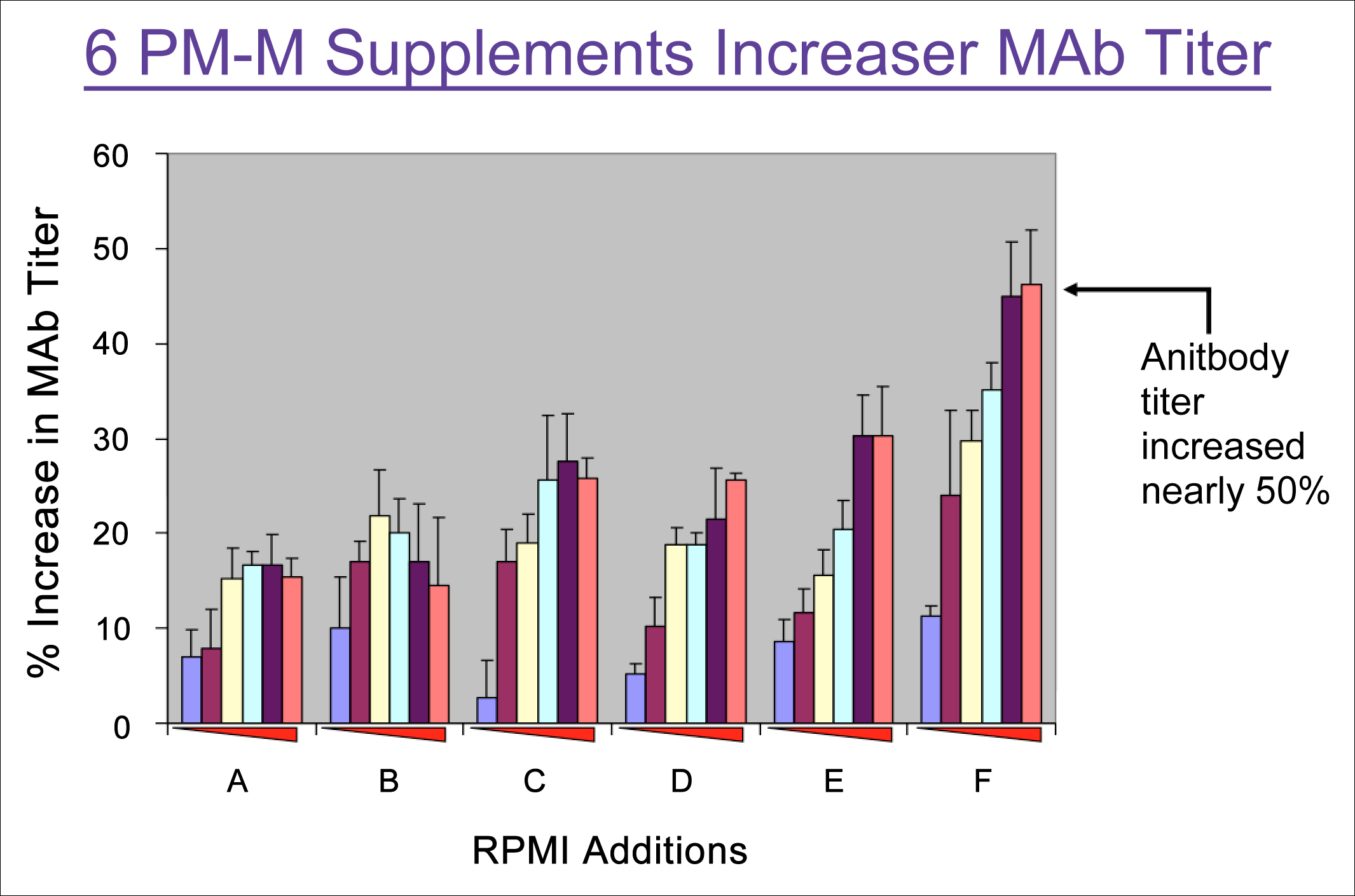Solutions
솔루션
Phenotype MicroArray™
한번의 실험으로 수백여 개의 세포적 피노타입(Cellular Phenotypes) 정성/정량 분석 home
home- > 솔루션 >
- Phenotype MicroArray™
|
[PM-M] 바이오공정 개발
인성크로마텍(주)
|
| Date : 2020.01.14 |
| 분류 : 포유류세포 |
The Phenotype MicroArray Assay Technology For Optimizing Clone Selection, Cell Line Development, and Media Formulations in Bioprocessing
Biolog's Phenotype MicroArray (PM) technology provides exactly what is needed by developers in bioprocessing - a simple and accurate tool measuring cell energetics, for efficiently screening and ranking clones for their metabolic efficiency, and detecting the effect of hundreds of nutrients that can potentially improve the growth, stability, viability and productivity of cells. If any culture medium variables in the PM panels are beneficial, that improvement can be detected and quantified.
Figure 1
Any laboratory can perform these simple, inexpensive assays. Just add a cell suspension with Biolog's redox dye and measure the rate of purple color formation in each well. The rate of dye reduction indicates the rate of energy production (NAD reduction) from each biochemical substrate in the microplate panel. The graphical data shown above were collected with Biolog's OmniLog instrument which can incubate and kinetically read up to 50 microplate assays.
Figure 2 shows an example of how PM assays can be used to identify cell lines with the most desirable metabolic characteristics. In this example, 8 sublines of liver cells and 8 of lung cells were characterized and directly compared for their relative metabolic rates in response to 367 carbon-energy substrates. Faster metabolism is indicated by the dark blue color. The top sublines are the liver cells, with cell line 13 having the most rapid metabolism of the greatest number of substrates, outperforming all other liver lines.
Figure 2
Figure 3 shows an example where PM plates were used to identify nutrient substrates that reduced the doubling time of CHO cells from 23 to 18 hours. CHO cells are the most commonly used cells in industrial bioprocesses and speeding their growth can shorten the fermentation time with important cost savings.
Figure 3
Figure 4 shows an example where PM plates were used to identify nutrient substrates that increased the productivity of an antibody-producing hybridoma cell. The best supplement increased yield by nearly 50%.
Figure 4
Improving Bioprocess Development with Phenotype MicroArrays from Biolog on Vimeo.
|




